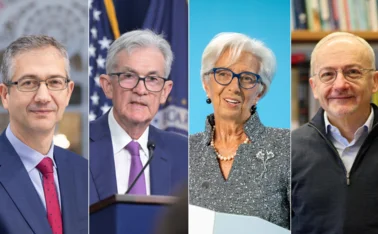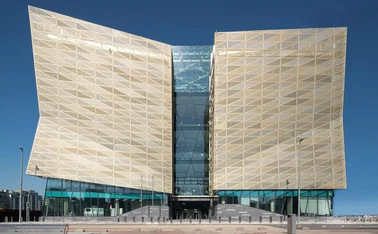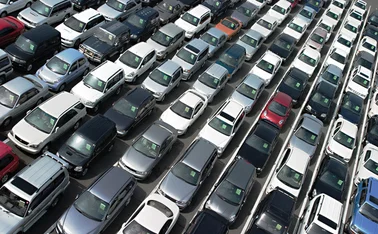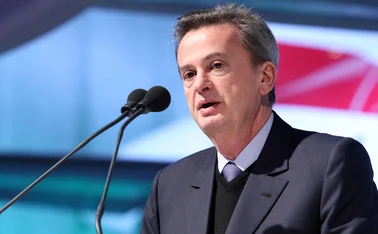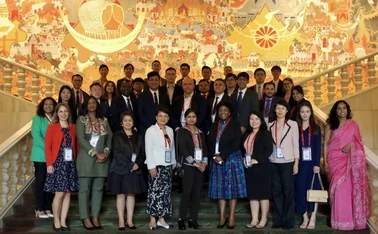
China's ‘One belt, one road’ vision to strengthen co-operation
The ‘One belt, one road' philisophy has been embraced by 57 countries
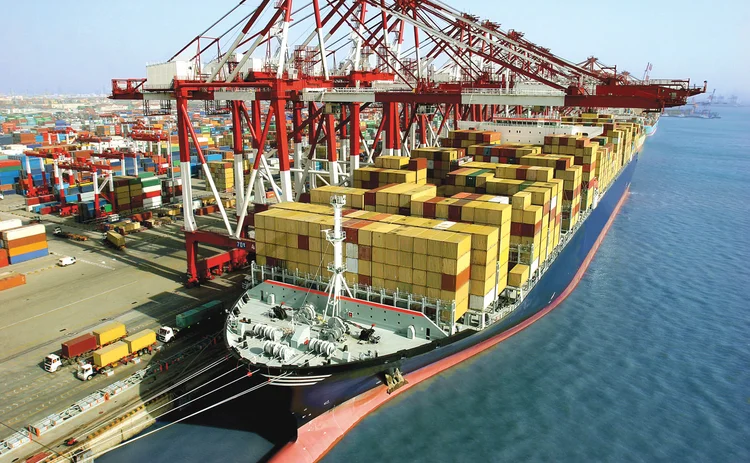
The concept of ‘one belt' was first proposed by Chinese president Xi Jinping in a speech at Nazarbayev University in Kazakhstan in September 2013: "To forge closer economic ties, deepen co-operation and expand development in the Eurasian region, we should take an innovative approach and jointly build an ‘economic belt along the Silk Road'."
The concept of ‘one road' was introduced by a speech that Xi delivered at Indonesia's parliament in October 2013: "China will strengthen maritime co-operation with Asean [Association of Southeast Asian Nations] countries to make good use of the China-Asean Maritime Co-operation Fund set up by the Chinese government and vigorously develop a maritime partnership in a joint effort to build the Twenty-first Century Maritime Silk Road."
The ‘One belt, one road' vision has been embraced by 57 countries, which expressed their willingness to support it by connecting it their own development plans, and striving for an ‘early harvest'. In November 2014, Xi announced the acceleration of the planning process for the ‘Economic Belt along the Silk Road' and the ‘Twenty-first Century Maritime Silk Road', and to strengthen co-operation with the countries involved. He also said China would set up a $40 billion Silk Road Fund, aimed at directly supporting the construction of ‘One belt, one road'.
"The AIIB [Asian Infrastructure Investment Bank] and the Silk Road Fund are complementary, rather than substitutive, to existing global and regional development banks," Xi said in a speech at the eighth meeting of the Central Leading Group on Financial and Economic Affairs.1
The ‘One belt, one road' vision reflects both the demand from relevant countries for releasing infrastructure bottlenecks and improving connectivity with large markets in Asia and Europe, as well as the need for China's own development and security. Developing countries are constrained by inadequate capacity, knowledge and financing resources, while China is facing constraints in energy, arable land, skilled labour and the environment. Working together, all partners can complement each other and achieve win-win solutions.
The ‘One belt, one road' plan also indicates China's desire to share its own ideas and experiences regarding economic development. This includes the philosophy that ‘in order to get rich, you need to build roads first' and that building infrastructure can act ‘as a countercyclical measure to boost aggregate demand and long-term productivity'.
China has used expansionary monetary, fiscal and investment policy to overcome contractionary pressure during two crises (the 1998 Asian financial crisis and the 2008-2009 global financial crisis). Now, after six years of resistance, the idea of building infrastructure as a countercyclical measure in a low-interest environment is well accepted (see Larry Summers 2014) and recommended by the International Monetary Fund (IMF 2014, WEO, chapter 3 on Infrastructure).
The ‘One belt, one road' vision is also aimed at reflecting China's view of ‘peaceful coexistence with differences' and of commitments providing global public goods, peace and sustainability. Deeply rooted in China's thousand-year history and civilization, there is a firm belief among the Chinese people that ‘one should not impose on others what he himself does not desire'.2
This principle has been consistently adhered to when China has granted foreign aid in the last 50 years, and will be further modernised and strengthened by the current generation of leaders. There is a view that ‘the Pacific Ocean is large enough' to allow the peaceful emergence of many developing nations, and that China's rise is conducive to world development and peace.
Benefits to countries en route
The Yuxinou railway, now in operation, has opened up ‘cheaper and faster' links between Kazakhstan and the European market, which is largely consumer-based. As of September 16, 2014, the rail service operates four departures per week from Duisburg (Germany) to China, Russia and Kazakhstan every Tuesday, Thursday, Friday and Saturday.
The proposed expansion of the Eurasian land bridge includes construction of a railway across Kazakhstan that is the same gauge as Chinese railways, linking India, Myanmar, Thailand and Malaysia. According to Xinhua, the expanded land-based ‘New Silk Road' will begin in Xian in central China before stretching west through Lanzhou (Gansu province), Urumqi (Xinjiang) and Khorgos (Xinjiang bordering with Kazakhstan). The Silk Road then runs southwest from central Asia to northern Iran before swinging west through Iraq, Syria and Turkey. From Istanbul, the Silk Road crosses the Bosphorus Strait and heads northwest through Europe, including Bulgaria, Romania, the Czech Republic and Germany. Reaching Duisburg in Germany, it swings north to Rotterdam in the Netherlands. From Rotterdam, the path runs south to Venice, Italy - where it meets up with the equally ambitious Maritime Silk Road. The United Nations has proposed further expansion of the Eurasian land bridge, including the Trans-Asian Railway project.
A unprecedented opportunity is open to Kazakhstan to target the huge consumer market in Europe (35% of the world trade) and in Asia (33% of world trade) by joining the existing supply chains using the importing-to-export model. Kazakhstan can take this opportunity to export products that the EU market needs, if it can (jointly) produce with high quality and efficiency. China's interest in promoting manufacturing hubs in inland and western regions such as Sichuan and Xinjiang has provided a good opportunity for Kazakhstan and neighbouring central Asian countries for diversification, job creation and growth.
The AIIB and the Silk Road Fund
The success of the ‘One belt, one road' vision depends on successful financing that is open, inclusive and transparent. In fact, several leading officials have emphasised that openness and inclusiveness are the features of the proposed Asian Infrastructure Investment Bank (AIIB) and the Silk Road Fund, and their common objective is to achieve mutual benefit and shared prosperity.
The next decade will witness a significant structural transformation in global economics, as China and other emerging market economies (EMEs) play significant roles as large traders, manufacturers, investors, financiers and infrastructure builders. The ‘One belt, one road' vision and its implementation will help address the bottlenecks in the Asia-Pacific region and beyond, and it could generate good returns for all stakeholders, as well as putting developmental results on the ground. However, to be effective, aid or development co-operation must be in the host country's own interest and demand-driven. Combining trade, aid and investment - a market-based approach - can ensure the alignment of incentives among equal partners, as shown by the successful experiences in many east Asian countries.
China needs to continue to learn, as in the last 35 years, to become a better development partner, by listening to the demands from partners and interacting with governments, non-governmental organisations and civil societies. China needs to be more open and transparent in providing accurate data on international development financing and activities. Political and economic dynamics must be taken into consideration when in discussion with the current government of the client country.
The established donors among Organisation for Economic Co-operation and Development countries also need to see if China's approach provides useful lessons to improve the effectiveness of the conventional North-South aid. A recent study by the World Bank in 2014 reviewed the approach of "resource for infrastructure [RFI] deals", finding this approach to be more effective in advancing the developmental impact "many years ahead of" the conventional North-South approaches. Many African leaders find China's approach (in RFI) more desirable, as it has led to ‘inexpensive and tangible results' within three to four years, coinciding with the political cycle within a democracy.
In the post-2015 era, development financing will come less from ODA, but more and more from the other official flows (OOF), OOF-like loans, and OOF-like investment from development banks, sovereign wealth funds in emerging economies. In a multipolar world, the prospect of South-South development co-operation is likely to expand, as shown by the ‘One belt, one road' vision and the establishment of the New Development Bank and the AIIB. However, established donors/partners need to be more inclusive to enhance the voice of emerging partners, and provide a place ‘at the table' for these emerging nations.
Post-2015, the emergence of new multilateral or regional development banks and funds (such as the AIIB, the New Development Bank and the Silk Road Fund) are encouraging, bringing positive energy and momentum to the world's economic development arena. In a multipolar world, it seems inevitable to have multipolar development organisations and multilateral development banks and funds. There is reason to be cautiously optimistic that common ground can be found for partners from the North and the South to work together on ‘win-win' solutions for sustainable development and world peace.
Box: China's 'One belt, one road' vision: The AIIB angle
I am currently in charge of preparatory work on the Asia Infrastructure Investment Bank (AIIB), which, similar to the Brics New Development Bank, is aimed at promoting regional economic integration and co-operation. China would like to play a role in international economic stability, but some western friends have doubts and misunderstandings. I would like to make some clarifications.
First, China intends to work with established international organisations and multilateral development banks (MDBs). The Bretton Woods system, including the International Monetary Fund (IMF) and the World Bank, was set up in 1944, the Asian Development Bank (ADB) was established in the 1960s, and the European Bank for
Reconstruction and Development (EBRD) in the 1990s. China would like to work with these multilateral organisations as well as bilateral government organisations when promoting regional integration
and the ‘One belt, one road' vision.
This vision by China's leaders has been well received by many countries, but some nations have expressed their suspicions. ‘One belt, one road' is the grand vision for a new international co-operation, which will benefit all relevant countries. It is not just a matter of creating more loan projects. ‘One belt, one road' is aimed at producing regional economic co-operation and a new globalisation.
China has emerged as a strong new player in international development and co-operation, and we want to achieve joint development and ‘multiple wins' with neighbouring countries. But it is not unusual for countries to have doubts and suspicions.
Despite some parties wanting to see China take on more responsibilities, they sometimes doubt the country's intentions. This kind of attitude is normal. After World War II, the US emerged as the world leader, dominating
the Bretton Woods system and playing an important role in the Asia-Pacific region. People soon got used to this pattern of geopolitical and economic governance.
But now China is emerging as a new influence in the region, and people are not used to it. There has to be a process (which takes time) to allow people to understand and realise that the country is playing a positive role in this region.
Listening to criticism
We need to understand this suspicion and be mindful when dealing with co-operation with all sides from the beginning. For example, if China provides loans to Association of Southeast Asian Nations (Asean) countries, the IMF will ask: "Will this increase the debt burden/ratios and affect debt sustainability?"
If we ignore the IMF's concerns, our projects will meet with obstacles and the impact will be adverse. So we must co-ordinate and co-operate with established multilateral financial organisations.
The IMF has a strong grasp of a country's macroeconomic situation and debt sustainability, and seeking its advice makes sense. Should we ignore this advice and issue the loan, we may either not able to receive repayment of the loan and/or we will disturb the international financial order.
Inclusivity
The Bretton Woods system is quite inclusive. Almost all countries were included when it was established in 1944, although stringent conditions were put on the Soviet Union at that time. Now we need to use the same multilateralism to promote our proposed vision for international co-operation.
For instance, for the ‘Maritime Silk Road', we need to not only work with Asean countries, but also co-ordinate with India, Sri Lanka, ‘the central Asia five' and Russia.
Connectivity is very challenging and complex - with different geocultural, socioeconomic and religious backgrounds in each country - so we need not only to promote physical connectivity, but also regulatory and policy connectivity.
I need to clarify a second misunderstanding in the media, which has reported that ‘China wants to export its excess capacity, and get access to natural resources'. Indeed, we have to conduct structural change/
transformation to get rid of excess capacity, but we cannot rely on exporting these capacities through trade and regional integration. The right way to deal with this problem is to adjust China's own economic structure.
Aiming for mutual benefits
When we attempt to implement the ‘One belt, one road' vision, it is challenging to find suitable projects that can benefit all sides involved. For instance, high-speed rail (HSR) is a good and relatively inexpensive technology, but it is difficult to find projects that can achieve viability and profitability.
Some central Asian countries have vast landmasses, but scarce populations, so building an HSR line would not have sufficient traffic volume. Therefore, we must be pragmatic and patient, and gradually identify mutually beneficial projects.
We should also pay attention to three points:
- Interpret the vision correctly and comprehensively, reflecting that our vision must meet the needs for the countries involved.
- Co-operate with relevant countries closely and find mutually beneficial projects.
- Collaborate with established international organisations and co-ordinate with them closely.
We cannot develop the ‘One belt, one road' policy without adhering to all three points.
AIIB development
During the process leading to establishing the AIIB from September 2013 to October 2014, 22 founding member countries participated at the signing ceremony. There were 26 founding members by the time of our meeting in Mumbai, India, on January 15-16, 2015.
This year, we have achieved a lot. The US's attitude toward the AIIB has changed in a subtle way, becoming more positive and welcoming established international organisations to participate in the AIIB.
I put forward three principles for the AIIB - lean, clean and green:
- Lean: our institution should be efficient and highly capable. It should not become a big bureaucracy.
- Clean: we have zero tolerance for corruption in the AIIB, including in the process of international competitive bidding, procurement, etc.
- Green: we promote environmentally friendly economic development.
It should be pointed out that the AIIB is different from the ADB. A total of 40% of the ADB's shares belong to the developed countries not located in Asia and only 38% belong to Asian countries. But Asian countries own 75% of the AIIB's equity, while non-Asian countries hold the remaining 25%.
The AIIB is the first multilateral financial institution dominated by developing countries. China is able to provide 50% of funding for the AIIB, but we're not seeking to control it or dominate it. We'll deny a project if most of our members reject it, although we have 50% shareholding. We are going to achieve the common goals of all stakeholders through negotiation and co-operation.
Future recruitment of the AIIB is open to global talent - we have already hired an American lawyer as general counsel. We hope this sends a strong signal that we are willing to work with partners from all over the world - and this will be proven by our actions.
Jin Liqun is secretary-general of the Multilateral Interim
Secretariat for Establishing the AIIB
1 For news and discussions regarding the ‘One belt, one road' vision, see www.scio.gov.cn/ztk/wh/slxy/gcyl1/index.htm
2 Translated as ‘What you do not wish for yourself, do not do to others'. Zi Gong (a disciple of Confucius) asked: "Is there any one word that could guide a person throughout life?" The Master replied: "How about ‘shu' [reciprocity]: never impose on others what you would not choose for yourself?" - Confucius, Analects XV.24.
Only users who have a paid subscription or are part of a corporate subscription are able to print or copy content.
To access these options, along with all other subscription benefits, please contact info@centralbanking.com or view our subscription options here: http://subscriptions.centralbanking.com/subscribe
You are currently unable to print this content. Please contact info@centralbanking.com to find out more.
You are currently unable to copy this content. Please contact info@centralbanking.com to find out more.
Copyright Infopro Digital Limited. All rights reserved.
As outlined in our terms and conditions, https://www.infopro-digital.com/terms-and-conditions/subscriptions/ (point 2.4), printing is limited to a single copy.
If you would like to purchase additional rights please email info@centralbanking.com
Copyright Infopro Digital Limited. All rights reserved.
You may share this content using our article tools. As outlined in our terms and conditions, https://www.infopro-digital.com/terms-and-conditions/subscriptions/ (clause 2.4), an Authorised User may only make one copy of the materials for their own personal use. You must also comply with the restrictions in clause 2.5.
If you would like to purchase additional rights please email info@centralbanking.com

